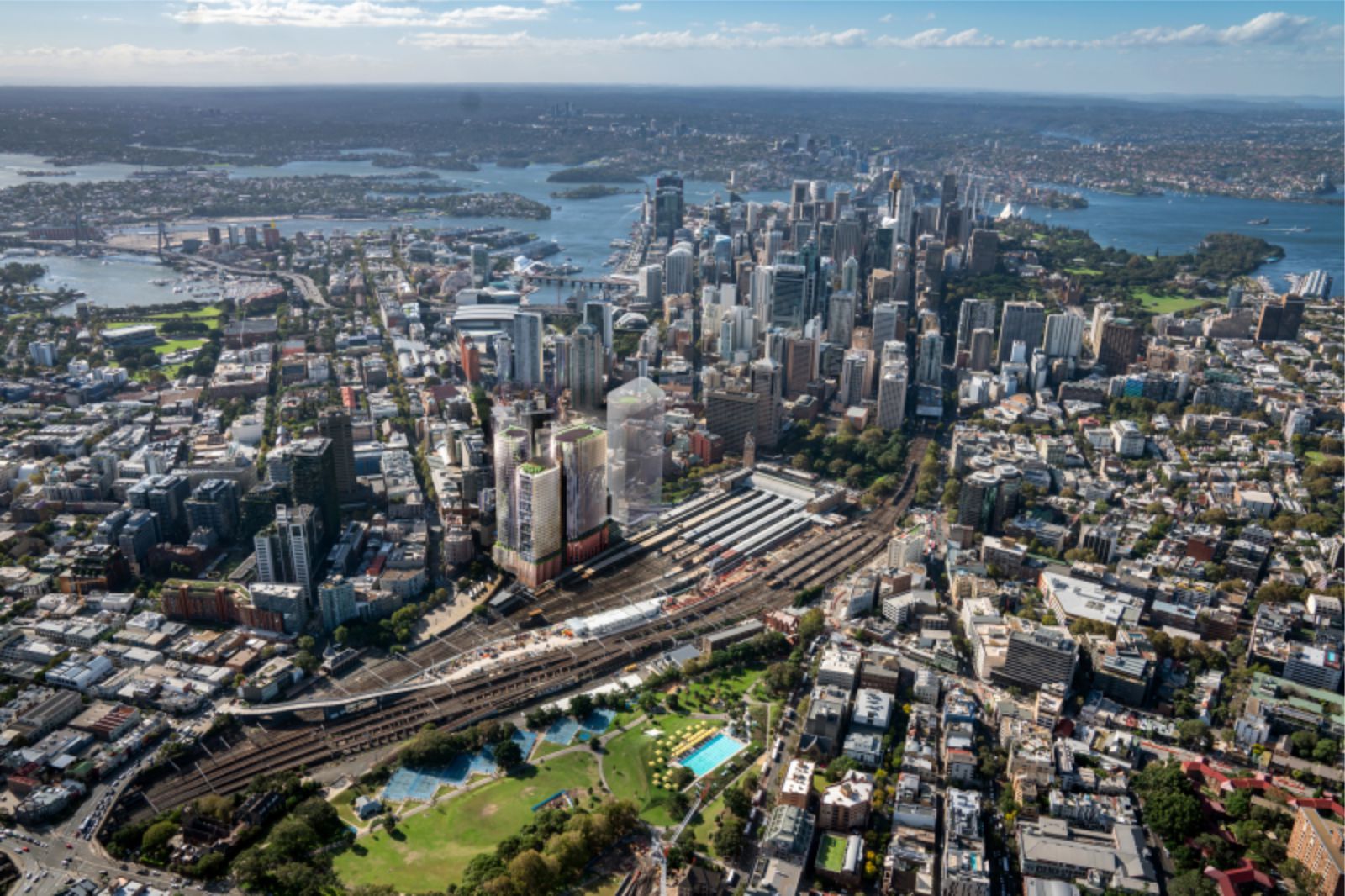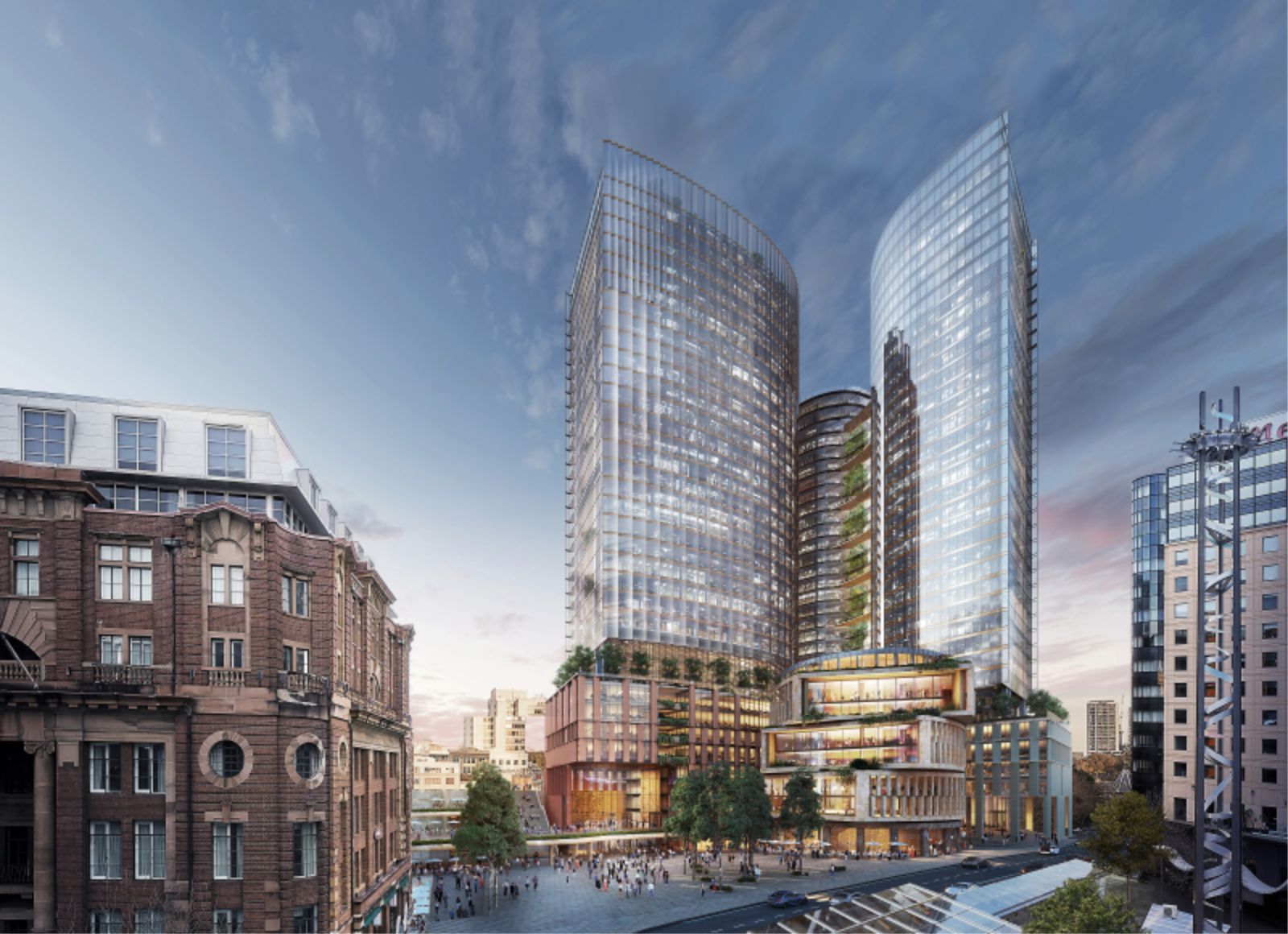In the city’s most significant CBD development, a $2.5 billion commercial development that will contribute to Tech Central in Sydney’s Central Business District, in more than a decade, the design by SOM and Fender Katsalidis is set to transform the western edge of Central Station. New commercial buildings and public realm improvements will enhance this southern gateway to the CBD, revitalizing and reconnecting the precinct to the city, and complementing the City of Sydney’s plan to create a third new major civic square.
The project is a partnership between developers Dexus and Frasers Property Australia. The design for Central Place Sydney features two commercial towers, 37 and 39 stories tall, woven together by a low-rise building anchoring the development and enlivening the precinct at street level. Landscaped public spaces surround the buildings, enhancing connections between neighboring communities and the city’s most prominent commercial axis. Located at the southern edge of Henry Deane Plaza, the central building is a dynamic urban form that shapes the precinct’s identity.
It ascends in a series of tiers, which are staggered to open up garden terraces and views at each level. The curved sandstone forms respond to the scale and materiality of the precinct’s existing character. The ground floor is highly permeable, accommodating a retail experience that flows into the plaza, while the upper commercial levels will be linked to the new towers to create campus-style floorplates. A core element of the Tech Central precinct, the project will encompass approximately 150,000 square meters of office and retail space.
It will be one of the most sustainable commercial developments in Australia, with workplace environments that integrate nature and a range of amenities. The architecture evolved from the overall urban planning strategy: two towers are expressed as three individual forms in order to reduce their visual density. Their distinct shapes read as a family, while each tower retains its own identity in terms of height, scale, articulation, and materiality. The building podiums are clearly distinguished from the towers above, each with a height, massing, and material palette that complements adjacent heritage buildings. The public spaces are designed to allow pedestrians to flow efficiently through and within the precinct.
Each floor is conceived as a unique “neighborhood,” connected by winter gardens, mixed-mode environments, light-filled atria, and outdoor terraces. The buildings will be naturally ventilated via operable windows and an automated facade system. The workspaces are highly flexible, with the possibility to be combined and expanded both within and between floors. These adaptable spaces can accommodate technology companies as they evolve in scale and continuously shape their culture.
The “breathing buildings” concept extends to a holistic consideration of how architecture relates to its environment. The buildings are shaped to mitigate wind forces and admit natural light, while the computer-controlled facade shades the interiors from direct sunlight and reduces heat gain. Central Place Sydney will be the focal point for the burgeoning Tech Central precinct and civic space, which also includes the new headquarters for software development company Atlassian. Source by SOM and Fender Katsalidis and images Courtesy of SOM.






